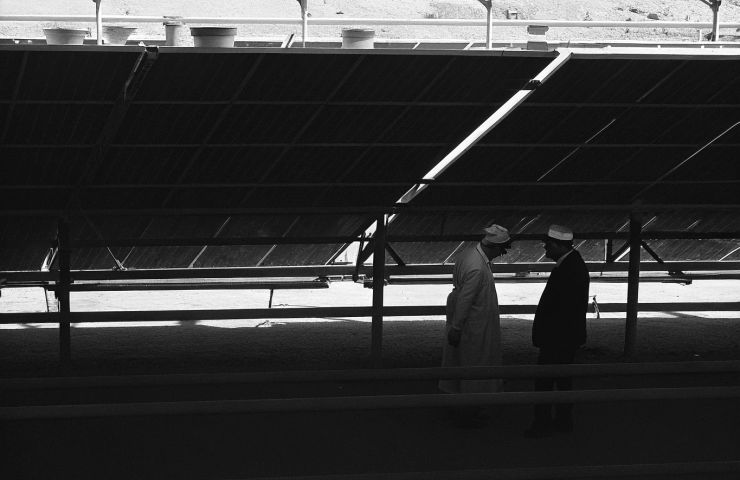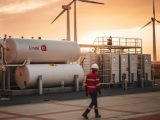
Oman Bets $50B on Korea’s Tech for a New Trade Corridor
August 25, 2025Oman isn’t playing small – it just dangled $50 billion in green hydrogen bets across Seoul and Changwon during a whirlwind, three-day tour from August 21–23. They’ve earmarked a whopping 50,000 sq km for future hydrogen fields, handed out nine project awards and set a bold 2030 target of producing 1.5 million tonnes a year. All in all, Hydrogen Oman (Hydrom) is making it crystal clear: we’re throwing open the doors to the sustainable energy era.
What It Means
If there was any doubt, this move screams: Oman is reinventing its economy around sustainable energy. By teaming up with South Korean experts in electrolysis and fuel cell tech, the Sultanate is staking its claim in Asian and European markets before the competition even gets started. They’re dangling sweet deals—guaranteed tariffs on green hydrogen, customs breaks for imported electrolyzers and fuel cell stacks, plus fast-tracked permits for each 300 sq km project slice. Investors aren’t just snapping up land; they’re buying a plug-and-play blueprint complete with shared hydrogen infrastructure—pipelines, storage hubs and export terminals all in one package. Nail this, and Oman could spin up a low-carbon supply chain, diversify beyond oil and fire off shipments of hydrogen and ammonia to markets starving for zero-emission solutions.
Kicking Open the Korean Door
The grand tour kicked off in Seoul, where Under-Secretary Mohsin bin Hamad al Hadhrami from the Ministry of Energy and Minerals and Ambassador Shaikh Zakariya bin Hamad al Saadi schmoozed with South Korea’s bigwigs—the Ministry of Trade, Industry and Energy and KOTRA CEO Kang Kyung-sung. They hashed out everything from joint R&D and funding schemes to syncing up regulations for cross-border hydrogen production trading. Over at the Embassy of Oman, panels showcased Oman’s rock-solid legal framework and auction model, flaunting nine deep-pocketed projects already locked in with over $50 billion on the table. The unstated pitch? “Hey, top-tier electrolyzer and fuel cell makers—make Oman your springboard into a new hydrogen superhighway.”
Incentives and Infrastructure
Hydrom didn’t just talk the talk—they rolled out a revamped buffet of perks: nine months to prep bids, up to 300 sq km per winning developer, guaranteed floor prices for hydrogen production, plus customs and VAT breaks on imported electrolyzers and fuel cell stacks. But the real ace up their sleeve is the carefully crafted hydrogen infrastructure: shared pipelines linking coastal export hubs, massive storage caverns carved into limestone, and modular liquefaction and ammonia-loading terminals. This approach slashes redundant spending, trims capex and dovetails with Oman’s big-picture push to lower market-entry hurdles and de-risk bets for investors.
Doosan’s Facilities: A Tech Tour
In Changwon, the Oman delegation descended on Doosan Corporation’s R&D hub. They poked around labs testing next-gen electrolysis stacks, high-pressure hydrogen storage modules and prototype fuel cell stacks aimed at trucking fleets and grid backup. Doosan’s place is a showcase for polymer-electrolyte membrane cell tech paired with software-driven asset management, so you can track performance remotely. Hydrom reps binged on back-to-back demos, quizzing teams on scalability, material sourcing and integration timelines—a clear nod that they’re counting on Korea’s tech chops to hit their fast-track schedule.
Strategic Play
This mission sharpened Oman’s pivot: swapping barrels of oil for barrels of green hydrogen by 2030. It all ties into Oman’s Vision 2040 roadmap and net-zero-by-2050 promise, which come hand-in-hand with major regulatory shake-ups—transparent auctions, special-purpose vehicles for public-private collabs, and strict environmental and social governance clauses in every contract. For Oman, it’s a high-stakes game: capturing ocean freight revenue, ramping up ammonia for fertilizer and marine bunkers, and cutting domestic emissions in heavy industries and power plants. Big names like TotalEnergies and Hyundai are waiting in the wings, but they’ll stick around only if policy blueprints turn into real-world pipelines and electrolyzer lines. Win, and Oman becomes the region’s energy crossroads; miss, and you’re staring at stranded assets in the desert.
Collateral Impacts
Don’t gloss over the ripple effects. Nail this plan and Oman could see thousands of direct jobs in construction, ops and engineering—and that’s just the tip. You’ll also get spin-offs in services, logistics, local manufacturing and specialist maintenance. Finance and legal shops will be scrambling to build new hydrogen project teams, boosting Oman’s professional-services sector. We might even see fresh supply corridors linking Middle Eastern hubs to Singapore’s bunkering network, Rotterdam’s ammonia terminals and Japan’s storage markets—literally reshaping global trade flows. On the tech side, regulatory tweaks could pioneer digital grid management, automated safety monitoring and carbon accounting. Of course, carbon-credit markets and volatile prices for electrolyzer parts and storage alloys could throw a wrench in the works.
Global Competition and Risks
Here’s where it gets real: Oman isn’t the only sun-soaked contender. Australia, other Gulf states, North Africa and even Chile are rolling out similar gambles, sparking a price war in electrolyzer capacity (which still eats up around 60% of project capex). Then there’s shipping snarls and strict ammonia handling rules that could sneak in extra fees. Oman’s floor-price guarantees give early movers confidence, but they also risk subsidy fatigue if market rates tumble. On the flip side, Europe’s import rules, VAT tweaks and looming carbon border adjustments could throw offtake agreements for a loop. Bottom line: teaming up with Korea buys you know-how, but political shifts and commodity cycles will keep you on your toes.
What’s Next?
All eyes are now on the third bidding round, which opened in April 2025. Investors have nine months to separate the dreamers from the doers. By early 2026, we’ll see which contracts get inked, money moves and FEED studies that’ll serve up the real measure of global interest. Watch for joint ventures popping up, financing memos flying around and EPC deals dropping—those are the breadcrumbs to the first hydrogen offtakes. If prototype electrolyzers hit Muscat port by Q4 2025, and ammonia pilot shipments sail off in 2026, you’ll know Oman’s corridor is more than just marketing jargon. It’s a working supply line destined to fuel Europe’s decarbonization push and Asia’s fuel cell boom.
Final Word
Oman’s Korea gambit is a bold statement, not a wrap-up. When that first mega-project lights up, we’ll see if this desert bet was pure genius or a high-stakes overreach.



 With over 15 years of reporting hydrogen news, we are your premier source for the latest updates and insights in hydrogen and renewable energy.
With over 15 years of reporting hydrogen news, we are your premier source for the latest updates and insights in hydrogen and renewable energy.